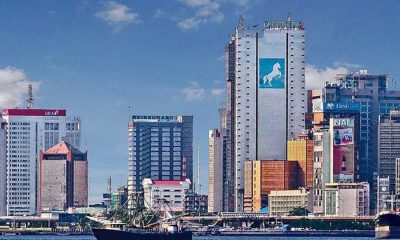Some economists have argued that Banks high net interest, which is the difference between the lending rate and the deposit rate, can dampen consumer spending and investment, leading to sluggish economic growth and reduced productivity.
The lending rate is the rate charged by banks on loans to the private sector and the deposit interest rate is the rate offered by commercial banks on three-month deposits.
According to the World Bank, interest rate spread data were reported at 8.027 per cent per annum in 2017. This decreased from the previous number of 9.370 per cent per annum for 2016.
However, within the last seven years, the interest rate spread has leaped to 20 per cent, and probably counting among Nigerian banks.
A financial economist at CashLinks, Dr. Francis Akpochafor stated that for borrowers, particularly individuals and small businesses, a high spread between deposit and lending rates translates into elevated borrowing costs.
He added that as banks charge higher interest rates on loans relative to the rates they offer on deposits, borrowers face increased financial burdens when seeking credit for investment, consumption, or working capital purposes.
READ ALSO: Why CBN’s decision on MPR my prevent Banks from giving credit–KPMG
“High borrowing costs can deter borrowing activity, constrain access to credit, and impede the growth and expansion of businesses, ultimately stifling entrepreneurial activity and innovation.
“A wide gap between deposit and lending rates can exacerbate economic inequality and exacerbate financial exclusion, particularly among low-income households and marginalized communities.
“As banks prioritize lending to creditworthy borrowers who can afford higher interest rates, individuals and businesses with limited financial resources may struggle to access affordable credit, perpetuating socioeconomic disparities and hindering inclusive economic development.”
Chief executive of the Center for the Promotion of Private Enterprise, Dr. Muda Yusuf, noted that the spread between deposits and lending rates are sometimes as high as 20 per cent, which is one of the highest globally.
He also said the tenure of funds in the banking system is extremely short. “Over 80 per cent of funds are of one year tenure or less, which explains the high level of assets and liability tenure mismatch in the banking system,” he said.
AdvertisementAccording to him, access to credit by small businesses remains a major inhibition to economic growth and economic inclusion.
“De-risking the credit space for small businesses should be accorded high priority in the new dispensation. This is essential to boost growth, create jobs, and deepen economic inclusion,” Yusuf added.
READ ALSO: Nigerian Banks’ Recapitalization: The Pathway and The Hurdles
Henry Mamfe, a retired lecturer of financial economics at University of Buea in Cameroon, said cited that when borrowing costs are prohibitively high, consumers may curtail discretionary spending, postpone major purchases, or forego investment opportunities, dampening aggregate demand and slowing down economic activity.
“Similarly, businesses may scale back investment plans, delay expansion projects, or reduce hiring, constraining capital formation and impeding job creation,” Mamfe noted.
He further stated that a wide gap between deposit and lending rates can undermine the effectiveness of monetary policy tools and central bank interventions aimed at stimulating economic activity and managing inflation.
He said when banks maintain high lending rates relative to deposit rates, the transmission mechanism of monetary policy becomes less effective as changes in policy rates may not translate into corresponding adjustments in borrowing costs for consumers and businesses.


 Comments and Issues2 days ago
Comments and Issues2 days ago
 Business6 days ago
Business6 days ago
 Business1 week ago
Business1 week ago
 Business1 week ago
Business1 week ago
 Business5 days ago
Business5 days ago
 Comments and Issues5 days ago
Comments and Issues5 days ago
 Education7 days ago
Education7 days ago
 News6 days ago
News6 days ago















